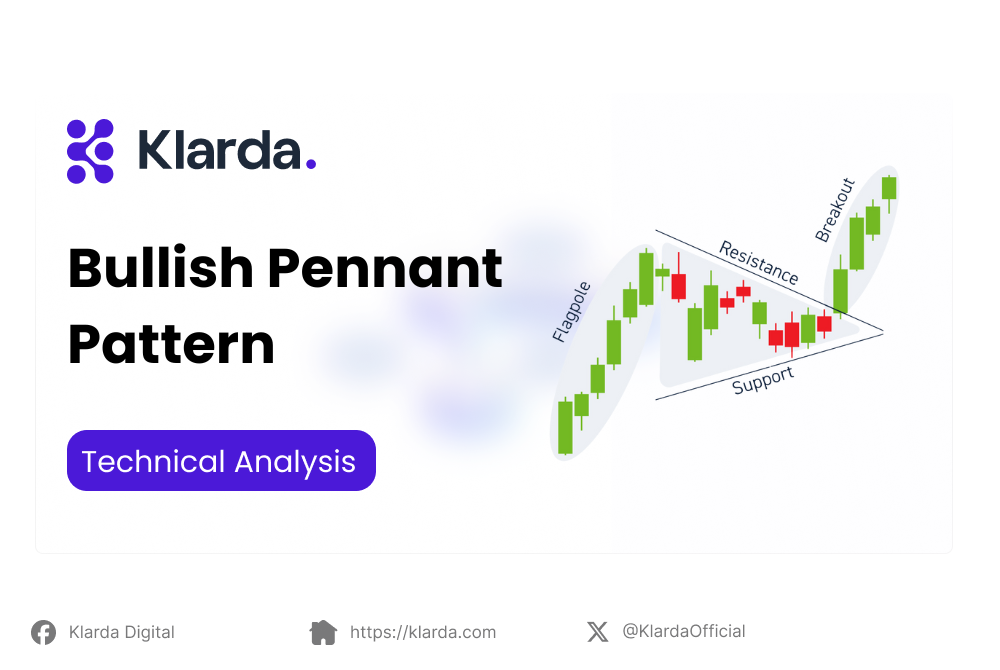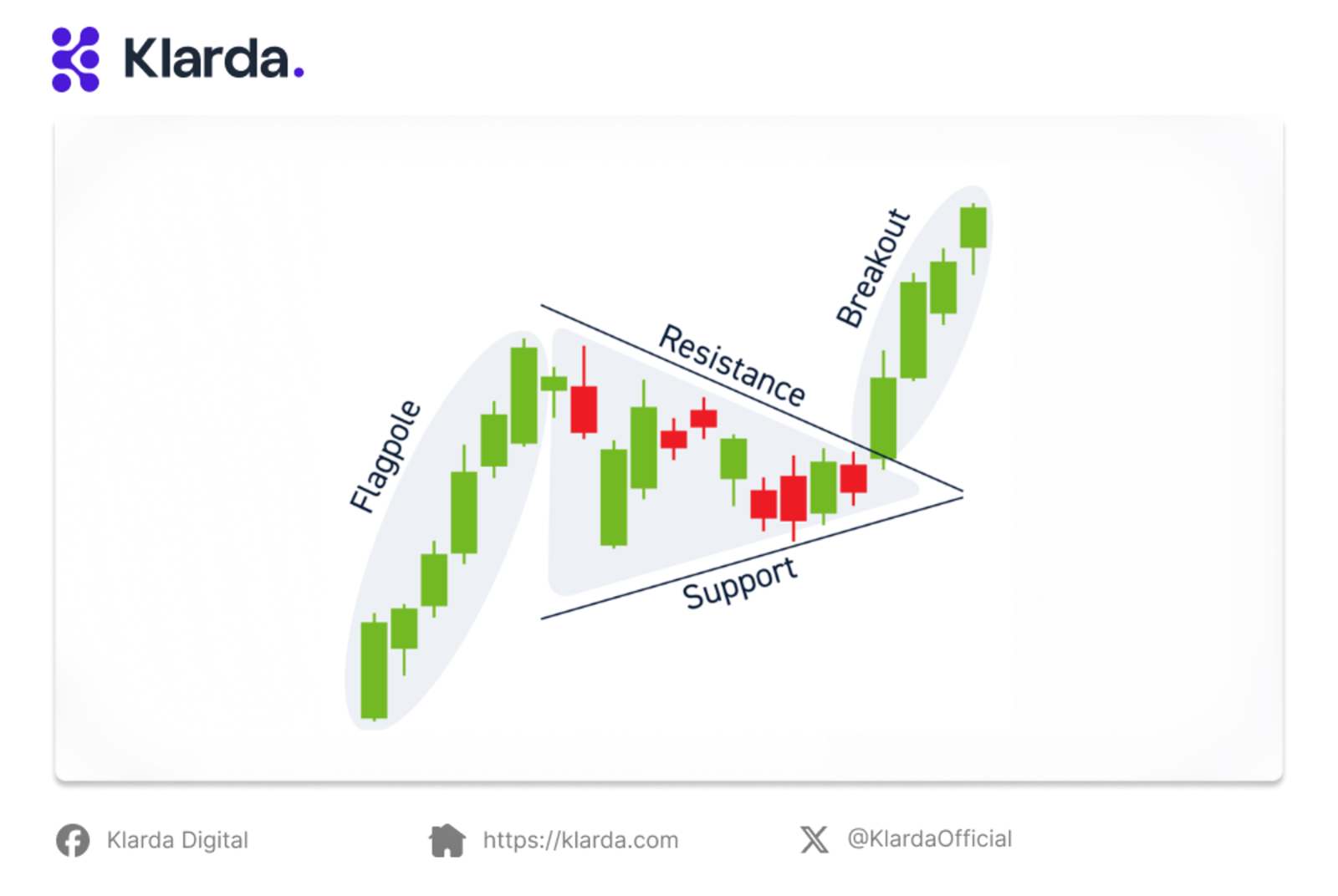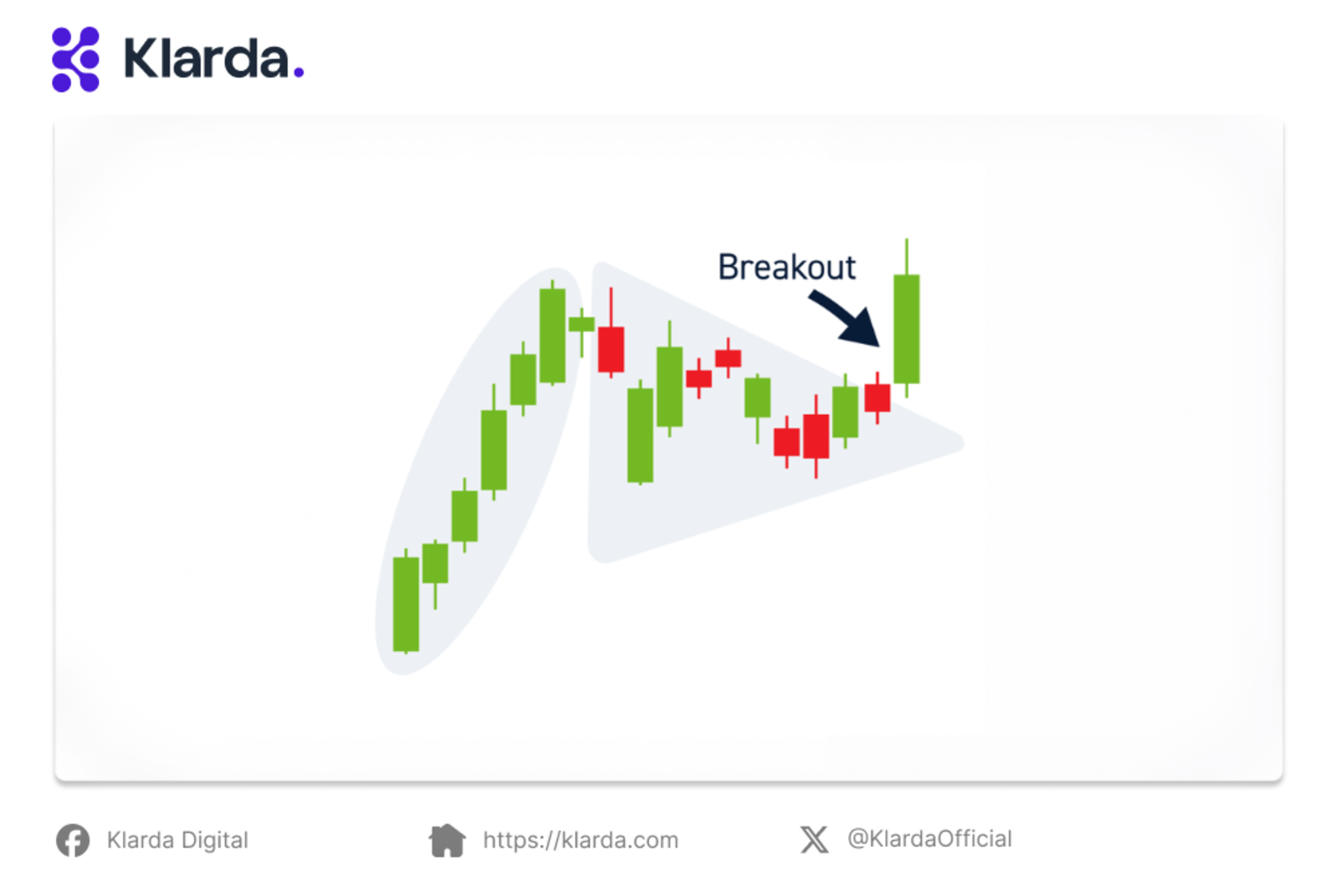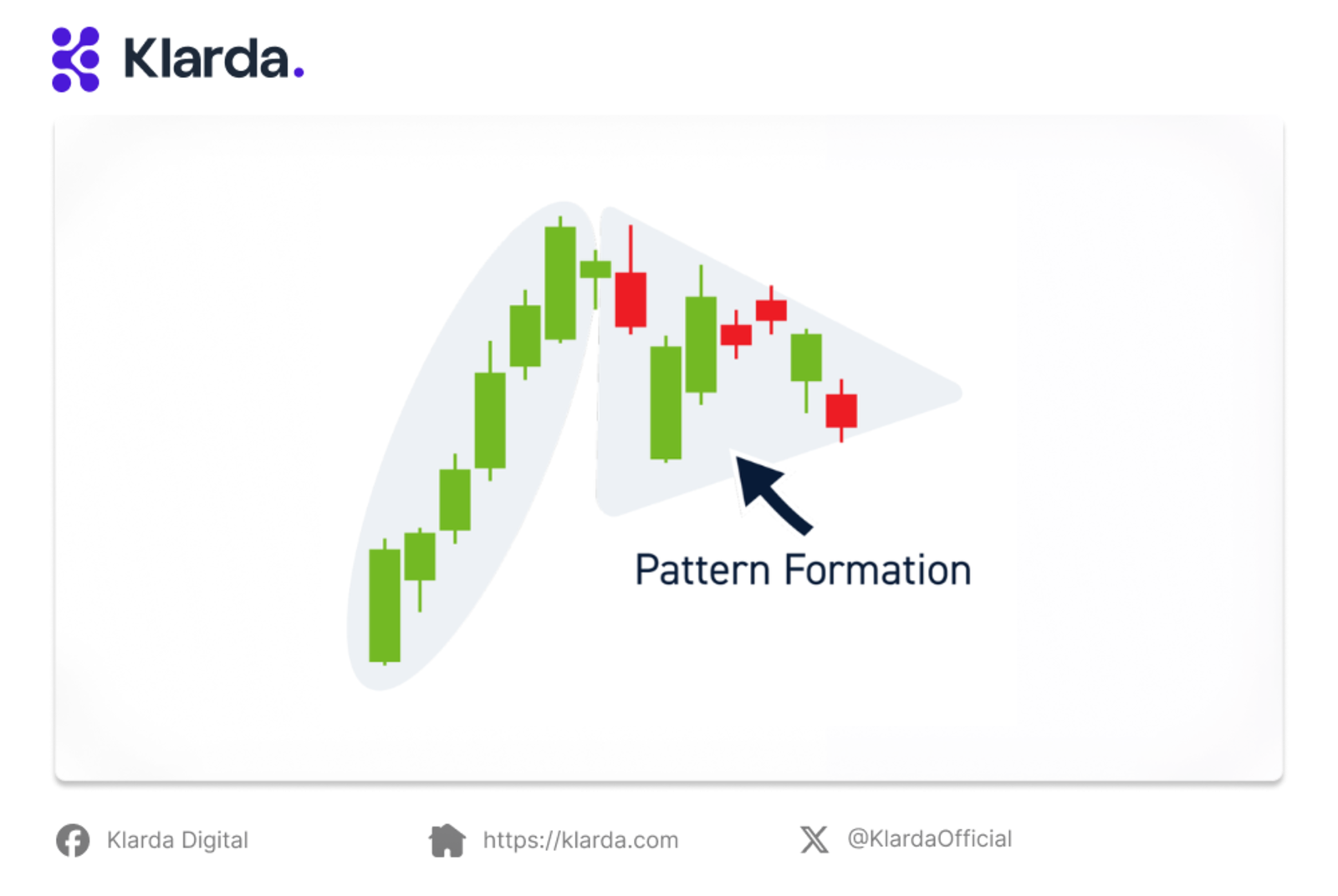Bullish Pennant Pattern
Discover the bullish pennant pattern: its definition, psychological aspects, and tips for successful trading in our comprehensive guide.
In technical analysis, traders look for various patterns to uncover potential trading opportunities. One notable pattern is the bullish pennant. This guide will cover the details of this pattern, the underlying psychology, and offer tips for trading it effectively.
Let’s get started!

KEY TAKEAWAYS
- Pennants are continuation patterns in technical analysis characterized by a consolidation phase followed by a breakout.
- During the consolidation, volume typically decreases, while breakout moments should see increased volume.
- Traders often use pennants alongside other technical analysis tools to confirm signals.
WHAT IS A BULLISH PENNANT PATTERN?

What is the bullish pennant pattern?
The bullish pennant pattern emerges after an uptrend, featuring a small symmetrical triangle as the market consolidates. This pattern typically breaks out upwards, indicating a continuation of the existing uptrend. It is deemed bullish because it reflects the market sentiment during an uptrend.
During an uptrend, traders' bullish outlook often drives buying activity, pushing prices higher. As the trend progresses, some traders may start to take profits, leading to a consolidation phase where buying pressure diminishes. This consolidation forms the pennant pattern, reflecting a period of mixed sentiment about future price direction.
The pattern represents a struggle between bullish and bearish forces. Bulls aim to drive prices higher, while bears attempt to halt the rise. Ultimately, the bulls prevail, leading to a breakout and continuation of the uptrend.
Flags vs. Pennants
Flags and pennants are often mistaken for one another due to their similar appearance, but they have key differences.
Pennants form a small symmetrical triangle with converging trendlines, indicating a brief consolidation before the continuation of the existing trend. The price movement within a pennant is generally less volatile, and breakouts are usually marked by a surge in volume.
Flags, in contrast, present a more rectangular or parallel channel shape. This pattern shows a brief consolidation where the price moves against the prevailing trend. Like pennants, flags suggest a continuation of the trend, and the breakout typically follows the current trend.
To distinguish between them, look at the trendlines: pennants have converging lines forming a triangle, while flags have parallel lines creating a rectangle.
HOW TO IDENTIFY A BULLISH PENNANT PATTERN?
To identify a bullish pennant pattern, look for the following characteristics:
- Upward Trend: A clear upward trend should precede the pattern. This indicates that the market is already in a bullish phase.
- Flagpole: A sharp, vertical rise in price forms the flagpole. This represents a strong buying impulse.
- Pennant: After the flagpole, the price consolidates in a triangular shape, narrowing as it progresses. This is the pennant, which typically lasts for a few days to a few weeks.
- Breakout: The pattern is confirmed when the price breaks above the upper resistance level of the pennant. This breakout signals a continuation of the uptrend.

Breakout example
HOW TO TRADE THE BULLISH PENNANT PATTERN
Step 1: Recognize the Pattern Formation

The initial step involves spotting the pattern formation. This means identifying an ongoing uptrend and observing the development of a pennant pattern that forms once the uptrend is underway.
Step 2: Await the Breakout
After identifying the pattern, the next crucial step is to wait for a breakout from the consolidation phase. This breakout generally happens in the upward direction, indicating that the uptrend is likely to continue.
Step 3: Initiate a Trade
Once you observe the breakout, you can proceed to enter a trade. This involves purchasing the stock through your brokerage account.
Step 4: Exit the Trade

Exit step example
The final step is to exit the trade, which can be accomplished either by taking profits at a predetermined price level or by setting a stop-loss order to limit potential losses.
BULLISH PENNANT PATTERN STRATEGIES
Here are some strategies for trading the bullish pennant pattern:
- Breakout Buy: Enter a long position immediately after the price breaks above the upper resistance level of the pennant.
- Pullback Buy: If the price pulls back slightly after the breakout, consider buying at a lower price.
- Stop-Loss: Place a stop-loss order below the low of the pennant to limit your potential losses.
- Profit Target: Set a profit target based on the height of the flagpole. For example, if the flagpole is 10 points, target a profit of 10 points from the breakout point.
BULLISH PENNANT PATTERN VS. BEARISH PENNANT PATTERN

Bullish pennant pattern vs bearish pennant pattern
While the bullish pennant pattern indicates a potential continuation of an uptrend, a bearish pennant pattern signals a potential continuation of a downtrend. The key difference lies in the direction of the initial trend and the breakout. In a bearish pennant, the initial trend is downward, and the price breaks below the lower support level of the pennant.
ADVANTAGES AND DISADVANTAGES OF THE BULLISH PENNANT PATTERN
Advantages:
- High Continuation Probability: Bullish pennants often lead to ongoing uptrends.
- Clear Entry/Exit Points: Breakouts and pullbacks offer defined entry points, with easy stop-loss and profit target settings.
- Potential for High Gains: Continued uptrends can result in substantial profits.
Disadvantages:
- False Breakouts: Price may break resistance but fail to sustain the move.
- Time-Consuming: Identifying and waiting for the pattern to form can take time.
- Market Volatility: Volatility can impact pattern accuracy and breakout timing.
FINAL THOUGHTS
The bullish pennant pattern is a valuable tool for traders who are looking to identify potential continuation patterns in uptrends. By understanding the characteristics of this pattern and applying appropriate trading strategies, traders can increase their chances of success in the market.
However, it's important to remember that no technical analysis tool is foolproof, and market conditions can always change.
In such cases, Klarda becomes a perfect choice. Klarda's product pages offer comprehensive information, including price history, news, social media trends, and potential risks/rewards. Explore Klarda's user-friendly features for better decision-making in your investments.
Updated 8 months ago